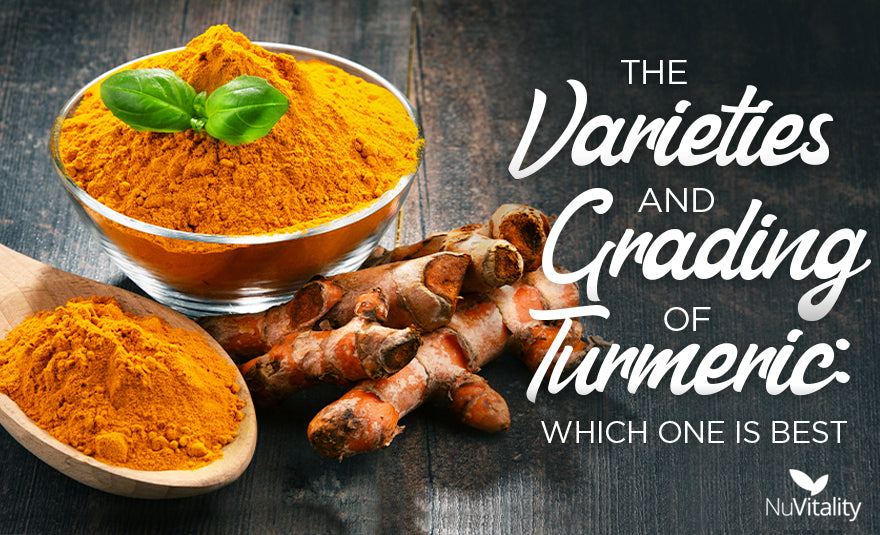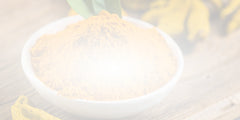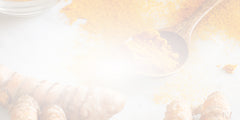
Turmeric is a growing sensation in the realm of natural health supplements, with its addition into meals offering the potential to create a happier, healthier version of yourself. One of the main misconceptions about turmeric is that it only exists in a single form. What might surprise you is that there are different variations and grades of turmeric worth considering for your supplements.
Today, we aim to help inform you on these different types of turmeric, the benefits they offer, and which might be better for your needs. As always, we would also remind you that supplements are only one facet of health, and you should always defer to your primary physician for checkups and care.
Turmeric Grading
When you are searching for your turmeric, you might find yourself simply grabbing what is in stock at your local store without much concern about the details of what it went through to be there. What might surprise you is that turmeric gets subjected to a grading system to determine its quality before being made available for purchase. The grading system evaluates several factors relevant to how the turmeric might be processed.
When it comes to the grade of turmeric, six fields are evaluated to determine the overall quality of what is being packaged.
- Moisture
- Ash Percentage
- Acid Insoluble Ash Percentage
- Curcuminoid Content Percentage
- Starch Percentage
- General Characteristics

Each of these six fields is used as a basis to determine if the turmeric being reviewed is pure enough to be safe for human consumption and use. The testing method used to evaluate these fields is a 7-step process:
- The turmeric powder is prepared by taking clean, dry Curcuma longarhizomes and grinding them down.
- The grinding process continues until the turmeric is so fine that 98% of the powder can pass through a 300-micron sieve successfully. If 98% of the powder can pass through an 800-micron sieve, it is labeled 'Coarse Ground.'
- The powder must have the taste characteristic of turmeric and be free of any musty odors.
- The powder must be free from any impurities such as foreign starch or external coloring matter.
- The powder must not contain any mold growth, living insects, dead insects, insect fragments, or rodent contaminants.
- The powder must conform and comply with any restrictions on aflatoxins, metallic contaminants, insecticide or pesticide residue, poisonous metals, naturally occurring contaminants, microbial loads, and similar as dictated by the Codex Alimentarius Commission or as specified by the purchaser's requirements for export purposes and the Prevention of Food Adulteration Rules, 1955 for domestic trade.
- The lead chromate test conducted on the powder must return a negative result.
Once the turmeric has been processed using these steps and instructions, the powder is evaluated on the six fields we mentioned earlier to be given its official grade designation. However, there is a separate grading system for the physical rhizomes rather than the powders. This governs whole turmeric root if you buy it pre-processing. Rhizomes are graded on:
- Flexibility
- Broken Pieces
- Foreign Matter
- Defectives
- Percentage of bulbs

These fields are used to grade the turmeric rhizomes in terms of quality and categorize them as fingers, bulbs, or splits. Each of these categories relates to the specific size and shape of the rhizome.
Bulbs are considered the "mother" rhizome as they serve as the center of a turmeric root and have an oval shape. They are shorter and wider than fingers, which are the secondary branches of the root and are thus called the "daughter" rhizome. Fingers fetch higher prices than bulbs or splits. As the name might imply, splits are a bulb that has been divided into halves or quarters to help with the curing process. By effectively categorizing the rhizomes, vendors can also price them and market them appropriately.
While the grading system is rather straightforward, you might be wondering about the relevance of such a system. The truth is, a history of contamination continues to the modern-day, so these standards are important to ensure that you get healthy, pure turmeric in your spices and supplements.
Turmeric Types
While the grading system is a vital aspect of determining how suitable turmeric is for human consumption, there is no universal standard for the differing types of turmeric. Many people assume turmeric is the same regardless of who is selling it or where it comes from. They do not know that there are different types of turmeric from various regions and appearances that have specific standards for the evaluation fields listed in the grading rubric we have already discussed.
One of the main types of turmeric currently in circulation today is Alleppey turmeric, originating from Kerala in India. Since Indian turmeric is considered to be the "original" turmeric, it is subjected to particularly high standards. Alleppey turmeric appears as a finger whose flexibility should be hard to the touch and have a 5% maximum of broken pieces, a 1% maximum of foreign matter, a 4% maximum of bulbs, and a 3% maximum of defective units.
Another turmeric variant is the Rajapuri turmeric which originates from Maharashtra in India. Like Alleppey, it is subjected to the same high standards. Rajapuri also appears as a full finger but has a 3% maximum of broken pieces, a 1% maximum of foreign matter, a 2% maximum of bulbs, and a 3% maximum defective units. The flexibility of Rajapuri is also ideally hard to the touch, like Alleppey.
Another major turmeric variant is the Salem Gattha turmeric hailing from Tamil Nadu in India. Are you noticing a trend yet? Salem Gattha requires a 3% maximum of broken pieces, 1% maximum foreign matter, and a 2% maximum of bulbs.

There is also a recently heralded turmeric species known as Lakadong turmeric that exists in Meghalaya in India. Due to its relatively newfound success as a turmeric species, there is little information on its grades. However, it is likely subjected to the same standards as the more generic turmeric fingers.
There is a universal average for specific grades when it comes to other generic turmeric finger types that do not fall into these categories. To get the coveted 'Special' grade, they should be hard to the touch with a 2% maximum of broken pieces, 1% maximum of foreign matter, a 2% maximum of bulbs, and a 0.5% maximum of defective units.
These scores are used to moderate the quality of highly valued turmeric finger species, most of which come from India. However, just because the turmeric comes from India does not mean the product is sound for consumption.
Why is Grading Important?
The significance of turmeric grading is all about making sure what we are being sold by our retailers is safe for consumption. Turmeric is a surprisingly dangerous spice due in large part to its country of origin. The most renowned rhizomes of turmeric originate in India, a country whose soil is consistently exposed to pollutants that extend toxicity to what grows from it.
The most common pollutant in Indian soil is heavy metals, which are highly toxic and more than capable of poisoning humans. When it comes to turmeric, recent studies have found that the rhizomes growing in Bangladesh can possess heavy metals up to 500 times the normal amount in other produce. However, this concentration of toxic metals is not always natural since there is an unfortunate scam at large in turmeric sales. Turmeric is famous for its bright coloration, usually yellow or orange, and this bright coloration is often associated with the quality of the powder that is commonly purchased.
While, ordinarily, the coloration is directly correlated to the concentration of curcumin in the turmeric, there is an artificial means to boost the color. Through the use of lead chromate, which is also brightly colored but highly toxic, turmeric merchants can enhance the color of their product to attempt to mislead purchasers on the quality of their product. 7 out of 9 districts in India that produce turmeric do so by adulterating it with lead chromate.
Lead chromate is composed of lead and chromium, resulting in a beautifully colored neurotoxin that is considered unsafe no matter how little there is in what you consume. In addition to neurotoxicity, the lead chromate used to adulterate turmeric can induce lead poisoning. The effects of this poisoning include muscle weakness, numbness, tingling sensations, and even brain inflammation. There are also more physical symptoms, including nausea, diarrhea, and vomiting. The most critical effect of lead poisoning is that it utterly destroys the kidneys, which is a fatal loss to the human body.
If you have concerns about the quality of the turmeric powder you have purchased and suspect it of being subjected to harmful contaminants, there is a way for you to test it after purchasing it.

To do this, you will need to take the powder and place it in a transparent glass with a few drops of water and hydrochloric acid. Then all you have to do is shake the contents. If the test causes the liquid to turn pink, there is a concentration of "Metanil Yellow". If there are small bubbles, there is a concentration of chalk powder.
To detect lead chromate, all you need to do is mix a teaspoon of turmeric powder with a glass of warm water. If there is lead chromate present, you will observe streaks of color in the glass. If you add the teaspoon of turmeric to a glass of warm water and leave it to sit for 20 minutes, you can determine the purity as sinking to the bottom means it is pure, whereas clouding indicates adulteration.
The toxins present in the adulterated turmeric are a prime example of why the grading system for the rhizomes and powders is necessary. By subjecting the product to the grading system for evaluation, especially the lead chromate test outlined in the 7th step, the chance of purchasing toxic turmeric is reduced.
It's worth mentioning here that reputable merchants, including ourselves, go out of their way to purchase highly-graded, contaminant-free turmeric. Always make sure that you trust the source of your supplements to avoid issues with unscrupulous sellers and dangerous contaminants.
What is Curcumin?
While not a type of turmeric, understanding curcumin is a major part of determining which type of turmeric is best for your specific needs. Curcumin is the chemical in turmeric that people seek when adding it to their diet, as it is the source of all the health benefits that come with the supplements.
The chemical itself was first identified by a French chemist named Pierre Joseph Pelletier in the year 1815. He was able to identify it due to one of the most noticeable features that curcumin provides to turmeric, the yellow color.
Ever since curcumin was discovered, it has become a key component of Ayurvedic medicine, although it has been met with skepticism from Western medicine. Despite this, turmeric has become an extremely popular medicinal supplement in recent years.

While curcumin has several uses aside from medical supplementation, including culinary and dyeing, it has grown in the former. Curcumin is the source of these potential medical benefits and the principal ingredient of turmeric and is the most bioactive ingredient.
Since the curcumin content is the source of all the health benefits associated with turmeric, it is heavily factored into the quality of turmeric. Just because the spice is brightly colored doesn't mean it's high quality.
The Root of the Subject
The quality of turmeric on the market is something that is far more complicated than the average consumer might be aware of. The fact is that turmeric is a highly valued spice with the potential to bolster the health of those consuming it. However, the real question is which turmeric species is the best?

Of the species of turmeric we have discussed in this article, we would have to say Alleppey turmeric is the best call. Due to the high standards, Alleppey is held to by the grading system, it is rare to find Alleppey turmeric that has been adulterated. There is also the fact that Alleppey turmeric has a curcumin concentration of about 6% to 6.5%, giving it an extremely high concentration compared to other market offerings.
A close second is the recently discovered Lakadong turmeric that claims to boast a 7% curcumin concentration. Once more information about its grades becomes available, it might dethrone Alleppey as the top turmeric.






